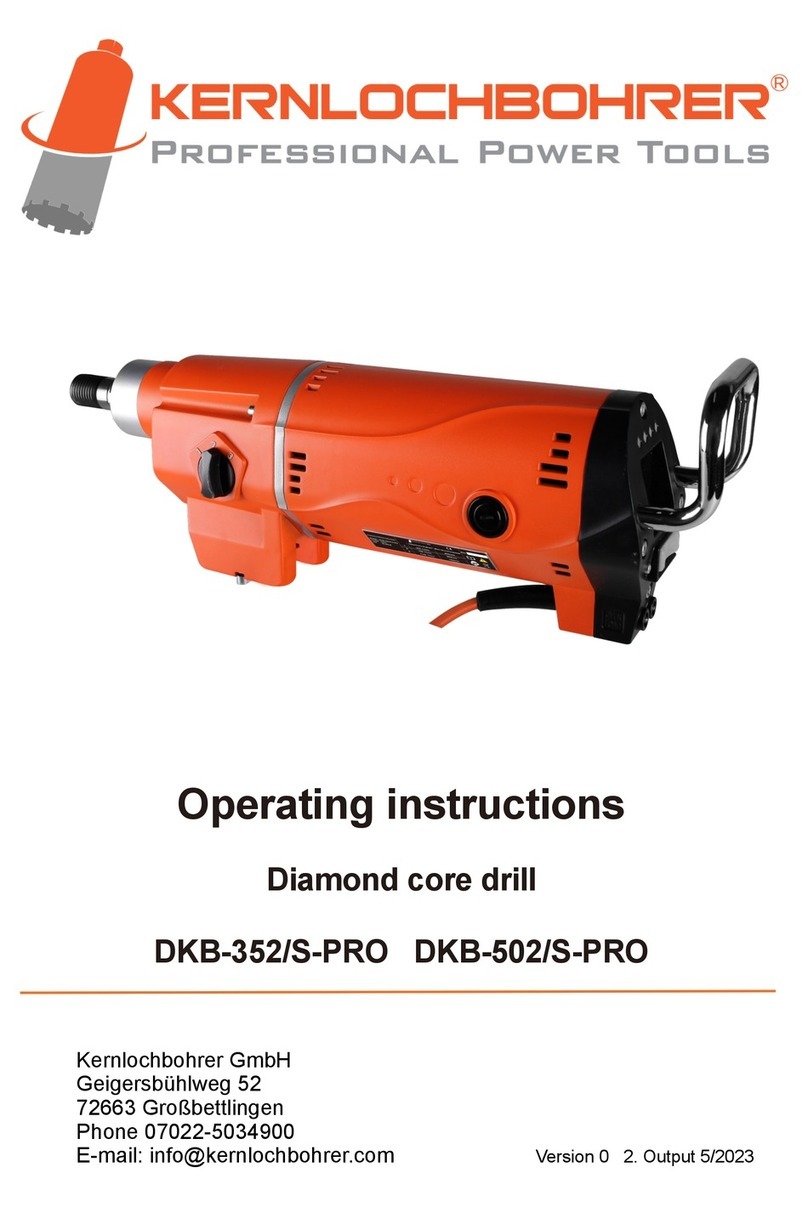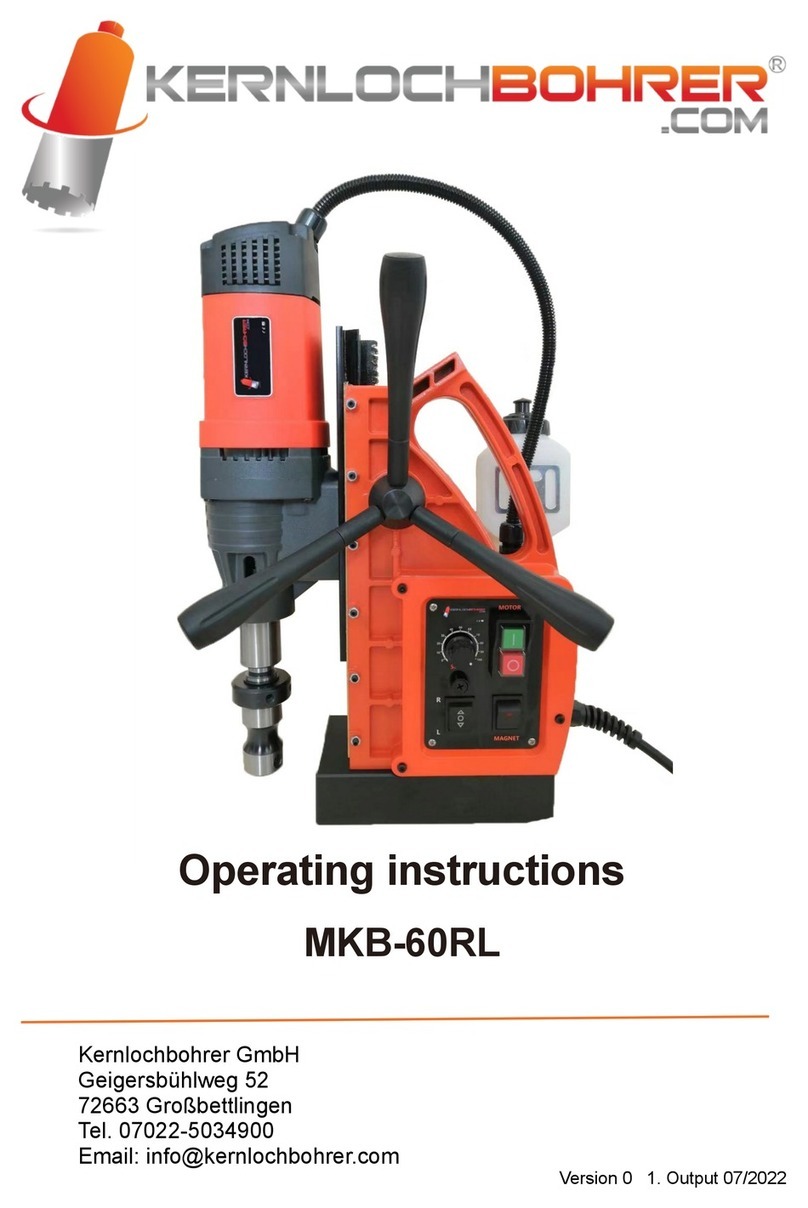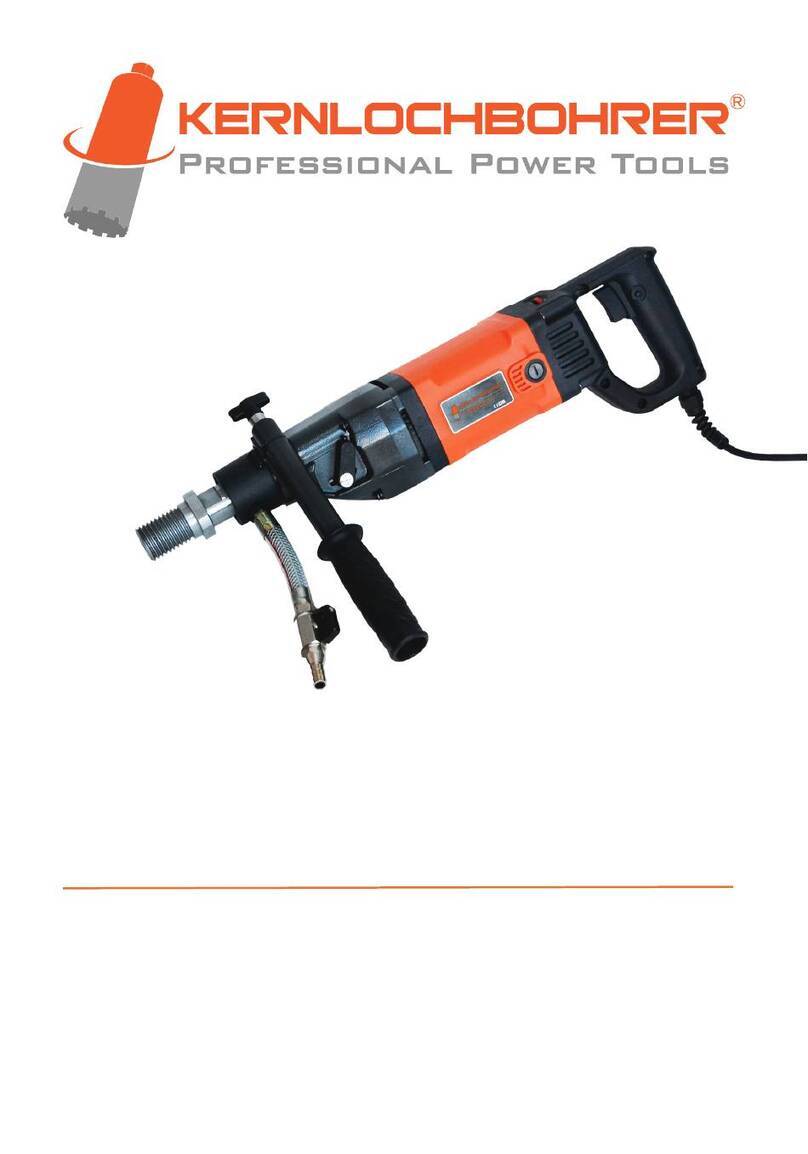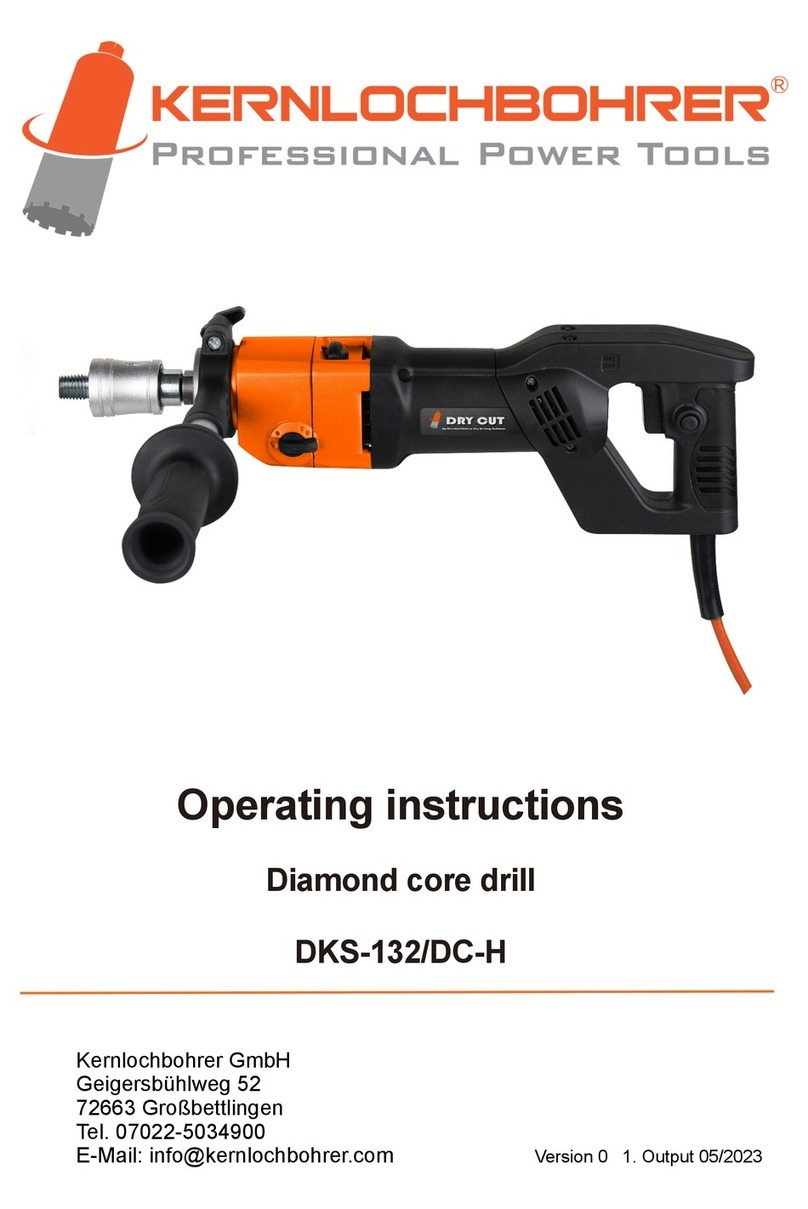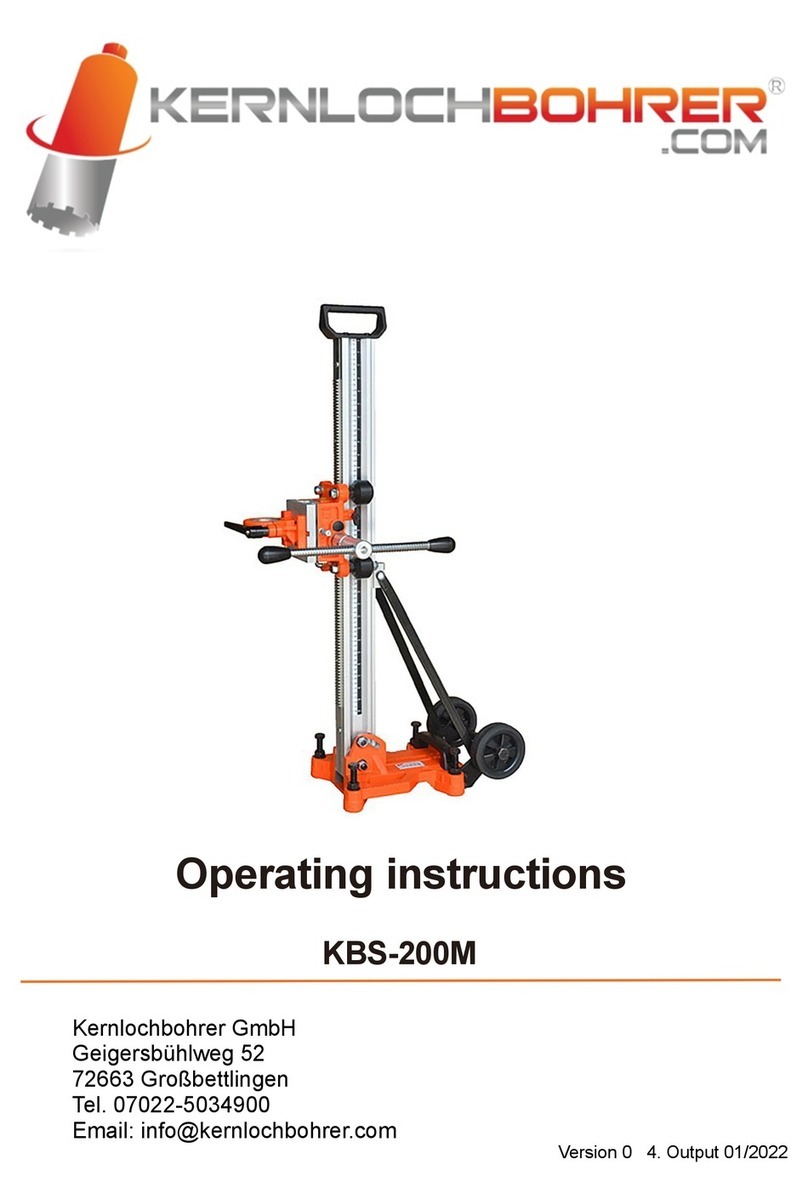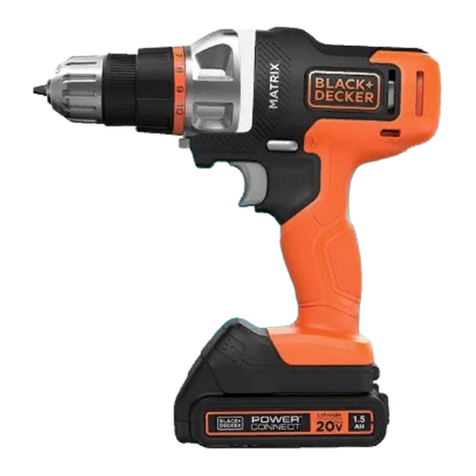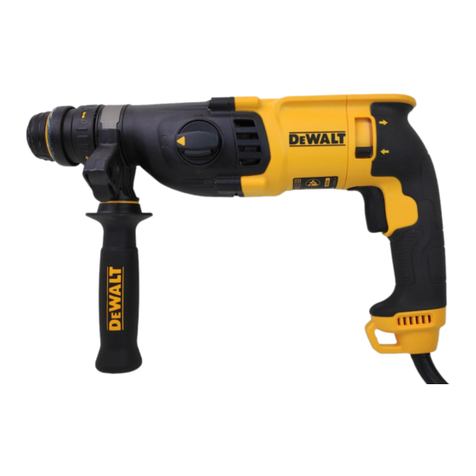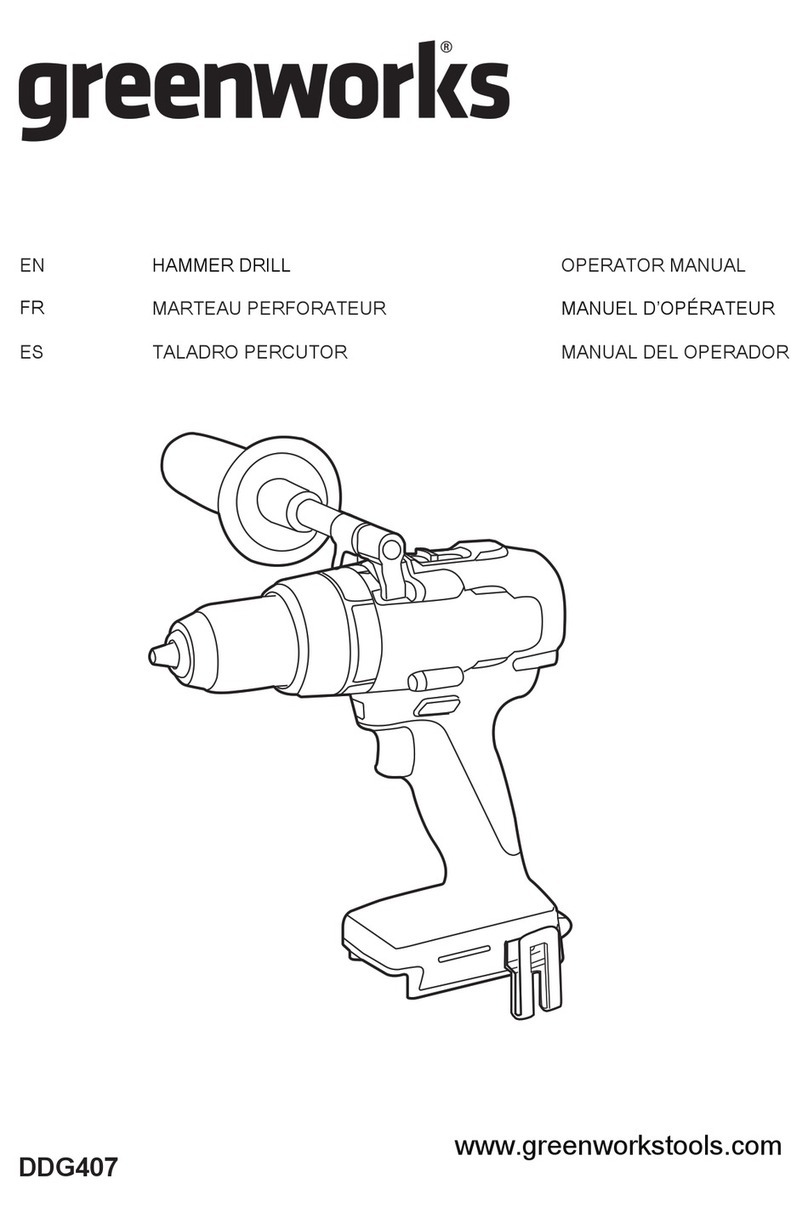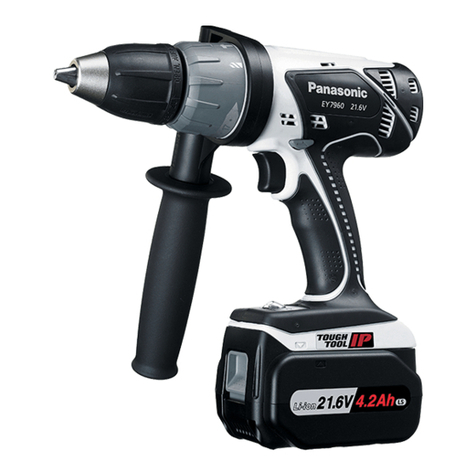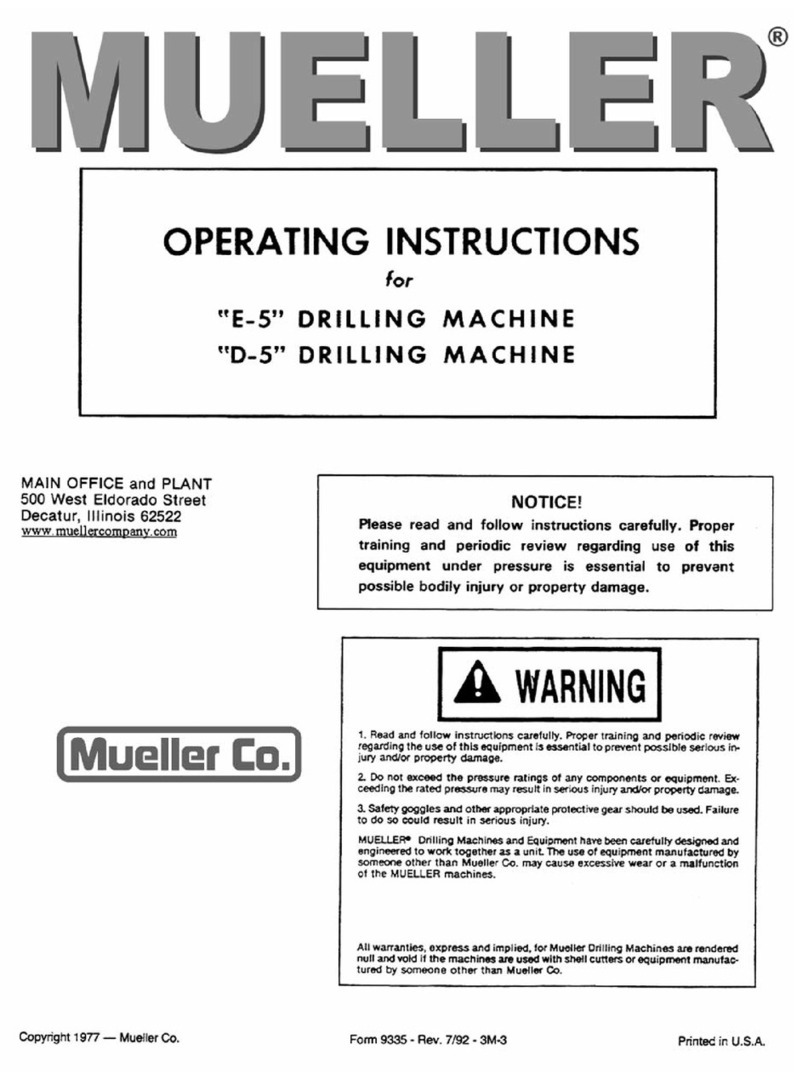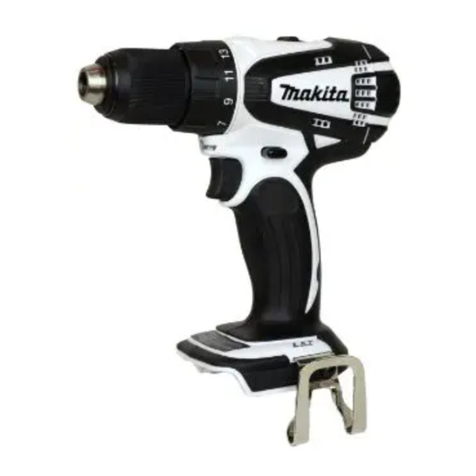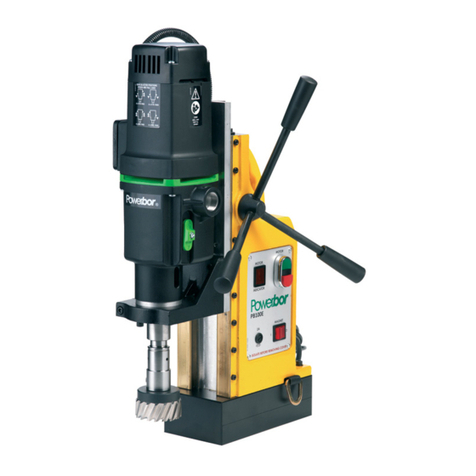9. Wear appropriate clothing. Do not wear loose clothing or jewellery. Keep hair,
clothing and gloves away from moving parts. Loose clothing, jewellery or long
hair can be caught by moving parts.
10. Do not overload the appliance. Use the appropriate power tool for your work.
With the appropriate power tool, you will work better and more gently in the
specified power range.
11. Do not use a power tool whose switch is damaged. A power tool that cannot be
switched on and off is dangerous and must be repaired.
12. Unplug the appliance from the mains before making any adjustments, replacing
accessories or putting the appliance aside. This safety measure prevents the
power tool from starting unintentionally.
13. Keep unused power tools out of reach of children. Do not allow persons to use
the tool who are not familiar with it or have not read these instructions. Power
tools are dangerous when used by inexperienced persons.
14. Beachten Sie, dass die Spannung nicht mehr als +/-5% der Nennspannung
betragen darf. Höhere Spannungen können zu irreparablen Schäden führen.
Beachten Sie, dass beim Betrieb der Maschine über einen Generator keine
höheren Spannungsspitzen erzeugt werden.
15. The plug of the power tool must match the socket. Do not change the plug
under any circumstances. Do not use adapter plugs with earthed forces.
Unmodified plugs and matching sockets reduce the risk of electric shock.
16. Avoid body contact with earthed surfaces or earthed components such as
pipes, radiators, areas and refrigerators.
17. Do not expose power tools to rain or wet conditions. Water entering a power
tool increases the risk of electric shock.

